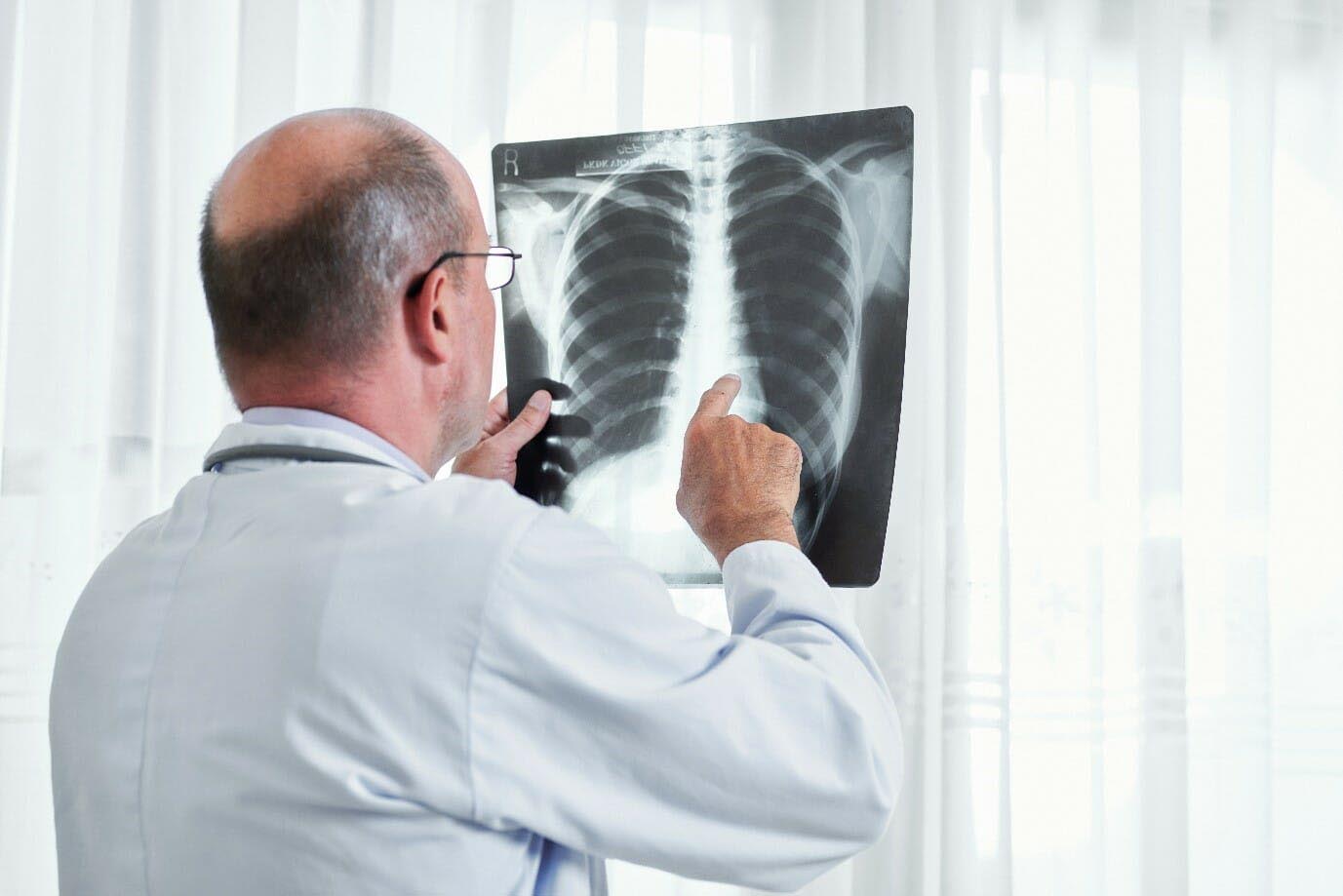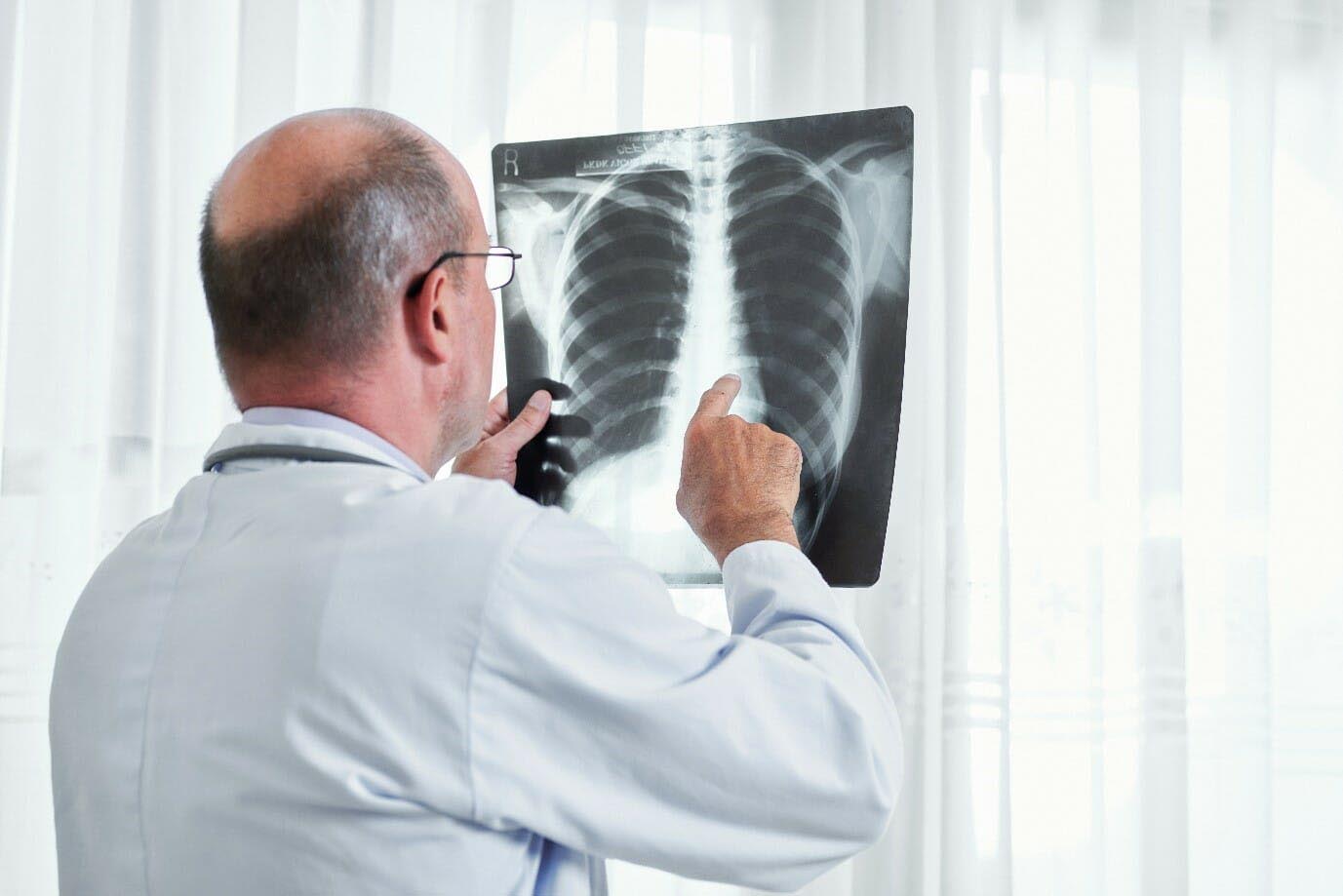Lung cancer is one of the most common forms of cancer. In fact, 14% of all new cancers are lung cancers, and the America Cancer Society estimates that there were 234,030 cases of lung cancer in the US during 2018 alone. That includes 154,050 deaths1. There is a 1 in 17 chance of anyone being diagnosed with lung cancer at some point during their lives, and those diagnoses include a 5-year relative survival rate of only 61%. These statistics may be frightening, but it’s important to recognize that there are many lung cancer treatment options, and that the sooner you act, the better your chances of a full recover.
That 61% survival rate statistic refers specifically to localized lung cancer. This means cancer that only affects the lung, and that has not spread into the bones, blood, or nearby organs. For regional lung cancer that has spread to surrounding tissue, the survival rate is only 35%, and this falls even further for the “Distant” SEER (Surveillance, Epidemiology, and End Results) stage down to 6%. The 5-year relative survival rate for all SEER stages is 24%.

The survival rates for small cell cancer are lower again.
What’s key to take away from this, is that lung cancer is an extremely serious condition, but also one that is more dangerous the longer it is allowed to continue. If you can identify and begin to treat the condition early, then you will have a survival rate that is better than 50%.
How Lung Cancer Forms
Lung cancer forms due to mutations in the cells, and specifically damage to the DNA. Every single cell contains a nucleus (its center), that in turn houses DNA. This is a strand of proteins that contains a special genetic code that instructs the cell on how to behave. It’s thanks to DNA that cells know where to sit in the body, what proteins to produce, when to die, and more.
Over time, cells die and need to be replenished via a process called mitosis. Here, the cell will split in half and create a perfectly identical copy of itself. This copy is formed using the DNA as a basis.
Over time, cells receive damage. Usually, this is external damage to the cell wall, and has no negative effect on the body at large. However, in some cases, that damage is able to penetrate all the way through to the DNA. When this happens, the DNA can become damaged and the cell thereby stops functioning properly. It might no-longer produce the correct proteins, or it might stop communicating with those around it. In some cases it won’t die, and in others, it will reproduce wantonly.
Most of us have cells like this in our body (that would technically be considered cancerous cells) but they are small enough that this doesn’t cause a problem. Eventually they die, and the body maintains its normal balance.
But if that cell should split and reproduce via mitosis, then it’s going to create an exact copy of itself as it is in that moment. In other words, you will now have two identical cancerous cells that don’t perform properly.
Each time that cell splits and divides, this same process is going to occur again and again. Eventually, a large area of tissue will be made up entirely of cancer cells, which is what we call a tumor.
The longer the cancer is allowed to continue, the larger the tumor will grow. Eventually, this can prevent the organ from functioning properly (the lung in this case) and increase the risk of the cancer cells spreading to other parts of the body.
Treatment Options
There are 5 main treatment options for addressing lung cancer. These are:
- Surgery
- Radiation
- Chemotherapy
- Targeted therapy
- Immunotherapy
Surgical treatments involve removing the tumor from the lung, or removing the lung entirely in some case. The latter is called a pneumonectomy and is considered a last resort. Other options include lobectomy (removing one lobe of the lung), a wedge resection, or a segmentectomy. A surgeon will need to balance removing as much of the tumor as possible, while leaving as much lung intact as they can.
Radiation therapy involves using beams of x-rays against the affected area in order to try to destroy the cancer cells. This can also damage healthy tissue surrounding the cancer cells however. This can lead to fever, coughing, shortness of breath, and other conditions.
Chemotherapy works in a similar manner to radiation therapy, using drugs in order to destroy cells. Again, this can affect both cancerous cells and healthy cells, but is less precise than radiation therapy. This means that the chemotherapy can cause many unwanted side effects such as hair loss, sickness, weight loss, and more. Chemotherapy is effective against progressive forms of lung cancer however.
In some cases, a physician may recommend the use of radiation therapy or chemotherapy following surgery in order to destroy any remaining cells.
Targeted therapy is a type of therapy that involves targeting specific genes and proteins that encourage the growth and survival of tumor cells. These include anti-angiogenesis therapy for instance, which works by reducing the formation of new blood cells (tumors need a source of blood in order to survive and grow). Epidermal growth factor receptor inhibitors work by preventing the growth and development of tumors.
Finally, immunotherapy aims to support the body’s own immune system in combating cancerous cells in order to provide a recovery with minimal symptoms. This method is difficult to measure and manage however.
The most important thing to do is to discuss with your physician which options are better for you. They will go into much greater detail discussing various lung cancer treatment options, and provide help, support, and advice during this difficult time.
